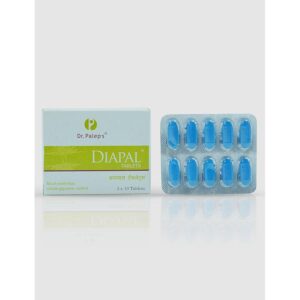AYURVEDIC + BENFOTHIAMINE METHYCOBALAMIN A
Ayurvedic: Ayurvedic medicine, also known as Ayurveda, is a traditional system of medicine originating from India. It is based on a holistic approach to health and wellness, focusing on balancing the mind, body, and spirit. Ayurvedic medicines are derived from various natural sources including plants, minerals, and animal products.
Use:
Ayurvedic medicines are used to treat a wide range of conditions and ailments. They aim to promote overall wellness, support the immune system, and restore balance in the body. Ayurvedic treatments can include herbal remedies, dietary guidelines, lifestyle practices, meditation, and yoga.
Mechanism of Action:
The mechanism of action of Ayurvedic medicines varies depending on the specific formulation and ingredients used. Many Ayurvedic herbs contain active compounds that have known therapeutic properties. For example, ginger may have anti-inflammatory effects, turmeric may have antioxidant properties, and ashwagandha may have anxiolytic and adaptogenic effects. These herbs and other Ayurvedic ingredients are believed to work together to restore balance and promote healing in the body.
Dose:
The dosage of Ayurvedic medicines can vary depending on the specific formulation and the condition being treated. It is essential to follow the instructions provided by a qualified Ayurvedic practitioner or the manufacturer’s guidelines. Ayurvedic medicines are usually available in various forms such as powders, tablets, oils, and decoctions.
Side Effects:
While Ayurvedic medicines are generally considered safe when used as prescribed, there can be potential side effects. Some common side effects may include allergic reactions, digestive issues, and interactions with other medications. It is crucial to consult a healthcare professional before starting Ayurvedic treatments, especially if you have any pre-existing medical conditions or are taking other medications.
It is worth noting that there have been reports of certain Ayurvedic medicines containing toxic substances, such as heavy metals, which can pose health risks. Therefore, it is important to ensure that Ayurvedic medicines are obtained from reputable sources and undergo safety testing to ensure their quality.
Overall, Ayurvedic medicine can be a valuable approach to holistic health and wellness, but it is important to use them under the guidance of a qualified practitioner and with awareness of potential side effects.
Benfothiamine Methycobalamin A: Benfothiamine Methylcobalamin A is a combination drug that contains two active ingredients: benfotiamine and methylcobalamin. It is commonly used as a supplement to treat certain conditions related to vitamin B deficiency.
Benfotiamine is a form of thiamine (vitamin B1) that has enhanced bioavailability compared to regular thiamine supplements. It is thought to work by increasing the levels of thiamine in the body, which is necessary for the proper function of nerves, heart, and muscles. Benfotiamine may also have antioxidant effects, helping to protect against cellular damage caused by high levels of blood sugar.
Methylcobalamin is a form of vitamin B12 that plays an essential role in the formation of red blood cells and the maintenance of a healthy nervous system. It is converted into a coenzyme that is involved in various enzymatic reactions in the body.
The recommended dose of Benfothiamine Methylcobalamin A varies depending on the specific condition being treated. It is important to follow the instructions provided by your healthcare provider or the packaging. Typically, it is taken orally with water after a meal.
Common side effects of Benfothiamine Methylcobalamin A may include nausea, stomach upset, diarrhea, and allergic reactions. If any of these side effects persist or worsen, it is important to consult a healthcare professional.
As always, it is crucial to speak with your healthcare provider before starting any new medication or supplement, especially if you have any underlying medical conditions or are taking other medications, to ensure its safe and appropriate use.

